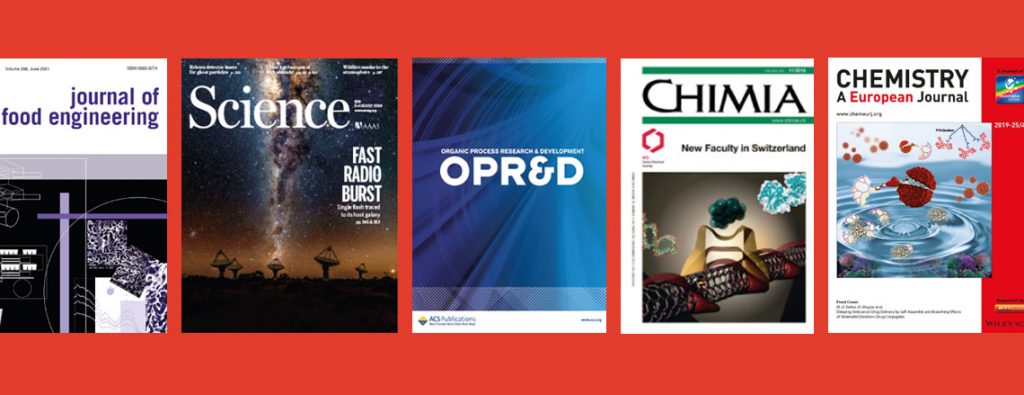Publication – Biofuels (biodiesel) continuous production – A Syrris article published in Biofuels International
Even with an environmental advantage, biodiesel still needs to be cost-competitive in order to be a long term viable option.
Today, biodiesel is mainly produced in batch chemical reactors. This is where the oil/fat is placed in a temperature controlled, stirred tank and reagents such as an alcohol and catalyst are added sequentially. The reaction is then stirred for a period of time before draining the contents of the reactor. A continuous process, on the other hand, involves pumping the oil/fat, reagents and catalysts through a temperature controlled pipe, thus continually producing biodiesel.
This can be less expensive to set up and run, easier to control, more consistent and need less storage. Continuous biodiesel production would, therefore, become cheaper, more competitive and more attractive to customers. The same technology can also apply to other biofuels production. As a result of these potential benefits at the production scale, there is an increasing amount of research and development effort at the laboratory scale.
Almost all biodiesel is produced using base catalysed transesterification. This is the most economical process requiring only moderate temperatures and pressures and producing a 98% conversion yield. The transesterification process is the reaction of a triglyceride (fat/oil) with an alcohol catalysed by a base to form fatty acid esters.The main limiting factor when scaling up the reaction is not the kinetics of the reaction itself but the mass transfer due to the immiscibility of the vegetable oil and the alcohol. The shear forces in the stirred tank reactors are not sufficient to effectively mix the two phases. This slows down the speed of the whole process. Continuous process reactors offer superior mixing, ensuring greater surface interaction between the two phases and most importantly faster reaction times.
The main limiting factor when scaling up the reaction is not the kinetics of the reaction itself but the mass transfer due to the immiscibility of the vegetable oil and the alcohol. The shear forces in the stirred tank reactors are not sufficient to effectively mix the two phases. This slows down the speed of the whole process. Continuous process reactors offer superior mixing, ensuring greater surface interaction between the two phases and most importantly faster reaction times.In the world of organic synthesis today, one of the fastest growth areas of research and development is in the field of continuous or flow chemistry. It has become more widely adopted by chemists and chemical engineers due to its multiple advantages. Formation of biodiesel is a standard organic reaction, so this is not a surprise that biodiesel production could benefit from the continuous flow process.
In the world of organic synthesis today, one of the fastest growth areas of research and development is in the field of continuous or flow chemistry. It has become more widely adopted by chemists and chemical engineers due to its multiple advantages. Formation of biodiesel is a standard organic reaction, so this is not a surprise that biodiesel production could benefit from the continuous flow process.
The benefits of continuous flow for biodiesel synthesis are:
- Rapid process optimisation: Reaction time, reaction temperature, quantities of reagents and catalysts can be automatically varied and each reaction analysed for purity and conversion
- Cheaper production: Faster reaction times (due to rapid mixing of biphasic reactions), lower capital investment and reduced storage requirements enable reduced costs. In the example presented here, a microreactor was used, giving a laminar flow resulting in fast reproducible mixing
- Cleaner products: Higher efficiency mixing (either by diffusion or static mixing) and better temperature control (due to a much higher surface area:volume ratio), results in concentration gradients and temperature gradients that cause side reactions to be minimised
- Greater ‘batch-to-batch’ consistency: As mixing and temperature control are superior in a flow reactor, the batch-to-batch variations are greatly reduced
- Multi-step reactions in one sequence: Continuous processes allow post reaction purification to be performed easily. This could be seen when a transesterification was performed on a flow microreactor followed by a liquid/liquid extraction performed with the Syrris FLLEX module (Flow Liquid Liquid Extraction Module). This allows the continuous removal of the glycerol byproduct from the biodiesel stream
- In-line analysis: This eliminates the need for tedious sample preparation steps and allows real time analysis of the crude biodiesel. In the example presented here, a sample was taken out of the stream automatically and sent to a mass spectrometer.
Historically, the absence of commercially available lab-scale continuous flow chemistry reactors meant that R&D of continuous biodiesel production was difficult. Now with the arrival of easy to use flow chemistry systems, investigating the benefits of continuous processing has been made easy. Burnham Institute for Medical Research, along with the support of UK-based chemistry product developer Syrris, UK-based biotechnology expert Amgen and US-based spectrometry solutions provider IonSense showed that the use of microreactors in biodiesel production offers many advantages when compared with traditional batch processing.
The triolein solution was combined with the methanolic solution in the microreactor. The two immiscible flow streams formed an alternating slug/plug flow of microdroplets of oil-aqueous-oil-aqueous. The admixture exiting the chip was diluted with water in the FLLEX module. Liquid-liquid extraction of the admixture in flow affords biodiesel in DCM, while the aqueous layer contains the methanol and glycerol byproducts.
Optimisation of the transesterification reaction was undertaken by modulation of the residence time in the microreactor at ambient temperature. A residence time of 2.5 minutes at room temperature was sufficient for complete conversion of triolein to methyl oleate. This method is significantly faster than reported microwave flow methods while proceeding at ambient temperature. In summary, mixing was achieved in very short time frames, even for immiscible phases. The continuous flow liquid-liquid separation facilitates rapid and efficient isolation of product while in-line analysis allows for real time monitoring.
This article was written by Yann Lecouturier from Syrris.

